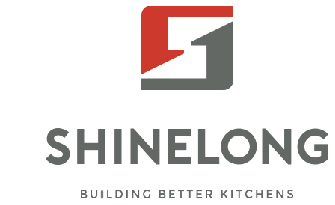News
Comprehensive Kitchen Solutions: Integrating Accessories and Uniforms
Essential Kitchen Storage Solutions for Modern Spaces
Maximizing Cabinet Efficiency with Custom Organizers
Getting those custom organizers installed makes all the difference when it comes to making the most out of cabinet space, especially going vertical where so many people overlook. Tailored solutions fit exactly what someone needs based on their specific cabinets and storage requirements, squeezing out wasted inches that would otherwise go unused. Take pull-out shelves for instance, they make reaching those hard to get items at the back of deep cabinets super simple. And let's not forget about Lazy Susans that spin around so everything stays within reach. Tray dividers are another game changer for keeping bakeware and other kitchen tools organized instead of stacked haphazardly. The folks who actually put these organizers in place tend to notice less food getting tossed because things stay visible and accessible. According to research done by the National Kitchen and Bath Association, kitchens that are well organized just plain work better, with less mess and more efficient cooking routines overall.
Innovative Shelving Techniques for Small Kitchens
Small kitchens don't have to feel so tight when we get creative with how we store things. Open shelves work wonders for making rooms look bigger while still giving plenty of places to put stuff. Floating shelves are another great option too, they give that clean modern look without taking up precious floor real estate. Some folks even mount cabinets on walls just to show off pretty dishes or keep everyday items within reach but out of sight. The adjustable ones are especially handy because nobody knows what they'll need next week let alone next month. Just ask anyone who's watched those home improvement shows lately - most designers swear by these kinds of smart storage tricks to turn tiny cooking spaces into something actually usable.
Space-Saving Accessories Every Chef Needs
Smart storage solutions make all the difference for anyone who wants their kitchen to run smoothly. Think stackable containers that nest together when not in use, those handy collapsible strainers that take up zero room when folded, and magnetic knife strips that keep blades within reach yet off the counter. These little gadgets do double duty saving precious real estate while keeping things organized so meals come together quicker and actually feel pleasant to prepare. Professional cooks swear by these space savers in restaurant settings, and they work just as well at home where counters get crowded fast. When storage isn't taking over the place, chefs spend less time hunting for stuff and more time experimenting with new recipes instead of wrestling with clutter.
Professional Uniform Integration in Commercial Kitchens
Choosing Durable and Stylish Chef Attire
Getting the right chef gear matters a lot when it comes to lasting wear and keeping things looking good in the kitchen. Fabrics that wick away sweat and extra strong stitching make all the difference in busy kitchens where accidents happen fast. The clothes need to hold up under pressure, sure, but they also have to look sharp because first impressions count even in back-of-house operations. Most cooking schools set guidelines that walk the line between looking professional and being able to move freely without getting caught on equipment. Some restaurants go so far as to specify particular brands or colors that match their overall brand identity while still allowing enough flexibility for actual cooking tasks.
Branding Opportunities Through Uniform Design
Restaurant custom uniforms really help with branding efforts. When places put their logo on staff outfits and use consistent colors throughout, people start recognizing them even before they walk through the door. Take look at how some chains do this so well their waitstaff practically become walking advertisements. The right outfit makes customers notice something different about the place, which sticks in their memory long after leaving. Plus, when employees wear something that looks good and fits properly, they tend to feel better about themselves and the job they're doing. This boosts morale across the board while also sending out strong messages about what kind of establishment it is.
Balancing Safety and Comfort in Workwear
Getting the right balance between safety and comfort in chef uniforms makes all the difference in how productive a kitchen runs day to day. Fire resistant fabrics and those extra strong pockets where knives and utensils go are pretty important stuff. They keep staff safe from burns and spills while making it easier to grab what they need when cooking under pressure. Let's face it, comfort matters too. Chefs spend hours on their feet in hot kitchens, so clothes that fit right and don't restrict movement really help them get through their shifts. Most industry guides point toward certain fabric blends and cut styles that stand up to the heat without sacrificing mobility. The best uniforms let cooks focus on food instead of constantly adjusting their gear or worrying about accidents.
Selecting Multi-Functional Kitchen Equipment
Multi-functional kitchen appliances really make a difference when it comes to getting more done in less time while keeping things organized. When someone picks an appliance that does several jobs at once blending, chopping, maybe even mixing stuff together it cuts down on all the clutter around the kitchen and makes cooking much easier overall. Take those fancy food processors for example. Some newer models let home cooks handle pretty much everything from making sauces to grinding meat right inside one machine, which saves precious counter real estate and cuts down on cleanup. People who work with kitchen gear day in and day out talk about how these all-in-one devices just work better than having separate gadgets for every little task. They speed up meal prep and mean fewer dishes to wash afterward. So if space is tight but functionality matters, spending money on these smart appliances pays off big time in the long run.
Strategic Positioning of Food Processors
Putting food processors in the right spot around the kitchen makes cooking so much easier and cuts down on all that back and forth running around when things get hectic. The best place usually ends up being close to where ingredients are prepped and where there's easy access to electrical outlets. When kitchens actually build appliances into their overall design, cooks find themselves moving from one task to another without getting stuck waiting for something else. Look at how professional kitchens work it out they often have everything positioned just right for maximum speed. Getting this stuff sorted properly doesn't just make the kitchen work better though it really transforms the whole cooking process into something smooth and enjoyable instead of frustrating.
Maintenance Tips for Long-Term Appliance Use
Keeping food processors and other kitchen gadgets well maintained really makes them last longer. Simple things matter a lot here - cleaning after each use and storing properly in dry places away from moisture helps keep appliances running smoothly for years instead of months. Most manufacturers actually provide detailed service schedules that should be followed if we want our machines performing at their best throughout ownership. Consumer surveys show that people who take good care of their equipment tend to replace appliances much less often than those who neglect basic upkeep. The bottom line? Regular maintenance saves money in the long run while keeping the kitchen functional without constant interruptions from broken tools.
Optimized Layouts for Comprehensive Kitchen Workflows
Zone-Based Kitchen Design Principles
When kitchens are designed around distinct zones for prep work, actual cooking, and cleanup areas, it really makes a difference in how smoothly everything goes. The whole idea behind this setup cuts down on wasted steps between tasks while making the kitchen run better whether at home or in restaurants. Some studies show that when these zones are clearly marked out, people actually spend about 20% less time getting meals ready. Just having separate spots for different activities means cooks stay focused instead of constantly moving back and forth across the kitchen floor. A good zoned layout works because every part of the space gets tailored to what happens there most often, which ends up making the whole kitchen experience much more efficient day after day.
Ergonomic Placement of Tools and Accessories
When we think about kitchen design, incorporating ergonomic principles really makes a difference in how comfortable people feel while cooking. Putting all those tools and gadgets where they actually need them, not just wherever there happens to be space, means less strain on the body over time. Nobody wants to bend over constantly or stretch up high to grab things when preparing meals. Research shows that folks who keep their most-used stuff between waist level and shoulder height tend to move around the kitchen much better without hurting themselves. Good ergonomics goes beyond mere comfort though. It creates spaces where people can work naturally without fighting against the layout every step of the way. The result? Less tired cooks and kitchens that actually function as intended rather than becoming sources of frustration.
Enhancing Efficiency Through Smart Storage
Pull out drawers and those clever hidden compartments make all the difference when it comes to getting more done in the kitchen without breaking a sweat. They let home cooks pack way more into limited spaces while keeping things within reach so nobody wastes precious minutes rummaging around. Some newer models even come equipped with voice commands or smartphone apps that track what's inside cabinets and pantries. A recent study looked at how people actually use their kitchens found something interesting too many folks save around half an hour each week just by having better storage setups. When smart storage makes its way into modern kitchens, counters stay clear, workflows get smoother, and everyone ends up spending less time hunting for spatulas or measuring cups.
FAQ Section
Why are custom organizers important in kitchen cabinets?
Custom organizers maximize cabinet efficiency by optimizing vertical space, making it easier to access items and reduce clutter.
How can innovative shelving benefit small kitchens?
Innovative shelving techniques, such as open and floating shelves, maximize storage space without compromising style or functionality.
What are essential space-saving accessories for chefs?
Essential accessories include stackable containers, collapsible strainers, and magnetic knife strips, which improve organization and conserve space.
How can custom uniforms enhance branding in restaurants?
Custom uniforms incorporate branding elements like logos and color schemes, boosting visibility and creating a distinct identity for the restaurant.
What maintenance practices extend appliance lifespan?
Routine cleaning, appropriate storage, and following manufacturer servicing guidelines can significantly extend the lifespan of kitchen appliances.
 After-Sales:
After-Sales:
 EN
EN
 AR
AR
 HR
HR
 NL
NL
 FI
FI
 FR
FR
 DE
DE
 EL
EL
 HI
HI
 IT
IT
 PT
PT
 RO
RO
 RU
RU
 ES
ES
 TL
TL
 ID
ID
 SL
SL
 VI
VI
 ET
ET
 MT
MT
 TH
TH
 FA
FA
 AF
AF
 MS
MS
 IS
IS
 MK
MK
 HY
HY
 AZ
AZ
 KA
KA
 UR
UR
 BN
BN
 BS
BS
 KM
KM
 LO
LO
 LA
LA
 MN
MN
 NE
NE
 MY
MY
 UZ
UZ
 KU
KU









